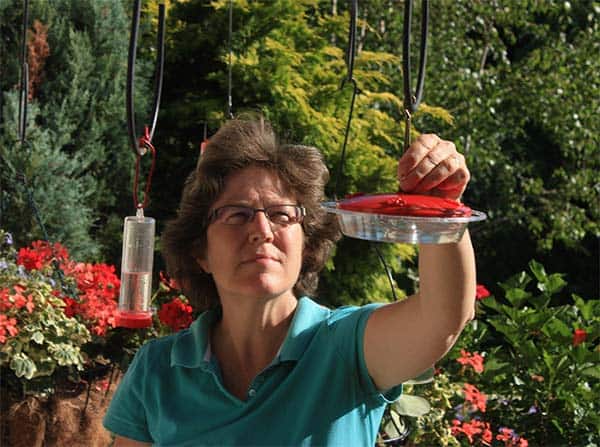Spring is the start of the breeding season for most of our North American birds. They pair up with mates, build nests, lay eggs, raise young, and then some of them repeat the cycle — as many as three times. There are some things that you can do to assist your backyard birds at this busy time of year. Here they are, in the time-honored Top Ten format.
10. Keep your cat inside (and ask your neighbors to do the same).
Cats take an incredible toll on songbirds, but low-nesting species and their young are especially vulnerable to cat predation. Do the birds a favor and keep this unnatural predator away from places where birds nest.
9. Provide nest boxes.
It may seem obvious, but a well-placed nest box can mean the difference between nesting success and failure for a cavity-nesting bird. It’s hard for many species to compete with starlings and house sparrows, which can take all the best cavities.
8. Hold off trimming hedges and shrubs.
Lots of species use small hedges and shrubs for nesting. If you see a bird building a nest in such a place on your property, you’ve got a great excuse to avoid this bit of yard work for the next month or two.
7. Put out pieces of dry plant material, such as grass stems, twigs, and soft leaves.
For birds that build woven nests (orioles, some sparrows, robins, and others), a few grass leaves can come in mighty handy during building time. Offer the pieces in a small basket or on any flat surface. Keep the pieces shorter than two inches to reduce the risk of birds getting tangled in them.
6. Offer short clumps of pet fur in mesh bags or put in obvious places.
If you looked at a hundred bird nests, chances are that most of them would have some animal hair in them. It’s soft, insulating, and easy to gather. When you groom your pet, save the fur to spread around your backyard for the birds to use—but only if your pet’s fur has not been exposed to chemicals from flea or tick treatments. Be sure to clip long strands into pieces no longer than two inches to avoid entanglement by nestlings’ feet and legs.
5. Put out eggshells for birds.
Eggshells help female birds replace calcium lost during egg production and laying. Save your eggshells, dry them out in the oven (10-30 minutes at 250 degrees), crumble them into small pieces, and spread the pieces on an open spot on the ground.
4. Continue to feed high-protein foods such as mealworms, peanuts, and suet.
Don’t stop feeding your birds, unless you want to miss out on some fabulous behavior watching. Energy-packed foods such as those listed above will lure your backyard birds (and their young) to your feeders. These young birds will learn at an early age where your feeders are.
3. Don’t mow meadows or brushy areas between late April and mid-August.
We keep our farm fields long and grassy all summer long, mowing only a few paths that we keep short all year. This means that field sparrows, prairie warblers, meadowlarks, and other birds can nest in peace. And our box turtles, butterflies, rabbits, deer, foxes, and other creatures appreciate our “farming” style, too.
2. If you find a nest — stay away.
If you happen upon a bird’s nest, don’t linger, and don’t make a return visit. We human beings leave scent trails wherever we go, and these scent trails can mean an easy meal to a hungry raccoon, opossum, fox, or other predator (We leave the same trails leading to our outdoor pet-food dishes, garbage cans, and compost piles). These predators are smart enough to follow these trails to see if they might lead to a snack. For the birds’ sake, don’t help to blow a nest’s cover by visiting it repeatedly.
1. Provide water for bathing and drinking on hot days.
Actually, provide water all year long, if you can—but make sure to keep it clean. Your birdbath may be the first place in your backyard a parent bird takes its offspring. Lots of family-style bathing takes place at summer birdbaths, and young birds can be dependent upon the only water source they know. So keep your bath filled and clean. Make sure the average water depth is less than three inches. Birds appreciate shallow water.


